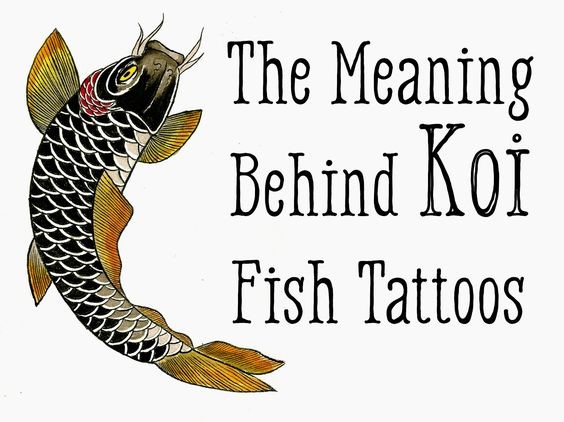Understanding Koi Fish Tattoos: Color, Direction, and Symbolism
Koi fish tattoos are rich in symbolism and meaning, making them a popular choice for many. These stunning tattoos draw inspiration from the koi fish, which is celebrated in various cultures for its beauty and significance. Let’s dive into what makes koi fish tattoos so meaningful, including their color variations, directional placements, and more.
The Symbolism Behind Koi Fish Tattoos
1. Perseverance and Strength
In many Asian cultures, the koi fish symbolizes perseverance and strength. According to legend, koi fish are known for their ability to swim upstream against strong currents. This trait has come to represent resilience and the ability to overcome obstacles in life. People who choose koi fish tattoos often do so as a reminder of their own strength and determination.
2. Transformation and Growth
The koi fish also symbolizes transformation and growth. In Chinese and Japanese folklore, koi fish that manage to swim upstream and reach the Dragon Gate will transform into a dragon. This transformative journey is often used as a metaphor for personal growth and achieving one’s potential. A koi fish tattoo can symbolize a significant transformation or the pursuit of personal goals.
Color Significance in Koi Fish Tattoos
1. Red Koi Fish
A red koi fish often symbolizes love, passion, and courage. It is associated with the heart and can represent a deep and passionate love or the bravery required to follow one’s dreams.
2. Black Koi Fish
Black koi fish are often associated with overcoming adversity. They can symbolize strength in the face of challenges and are seen as a representation of resilience and the ability to rise above difficulties.
3. White Koi Fish
White koi fish can symbolize purity and innocence. They are also associated with a sense of peace and tranquility, making them a choice for those who seek calm and balance in their lives.
4. Gold Koi Fish
Gold koi fish are often linked to wealth and prosperity. In Chinese culture, gold is a color of good fortune, and a gold koi fish tattoo can signify financial success and abundance.
5. Blue Koi Fish
Blue koi fish are often associated with peace and tranquility. They can represent calmness and a sense of serenity, making them ideal for those seeking inner peace.
Directional Placement and Its Meaning
1. Swimming Upstream
A koi fish tattoo depicted swimming upstream is generally seen as a symbol of struggle and the will to overcome obstacles. It represents a journey of perseverance and the determination to achieve one’s goals despite challenges.
2. Swimming Downstream
On the other hand, a koi fish tattoo swimming downstream can symbolize ease and the flow of life. It represents the idea of going with the flow and adapting to life’s circumstances without unnecessary struggle.
3. Facing Each Other
When two koi fish are tattooed facing each other, it often symbolizes balance and harmony. It can represent a partnership or the balance between different aspects of one’s life.
Placement on the Body
Koi fish tattoos can be placed on various parts of the body, each with its own significance:
Arm: A koi fish tattoo on the arm can be a personal reminder of strength and perseverance. It’s also a visible place, making it a prominent symbol of the wearer’s journey.
Back: A koi fish tattoo on the back can cover a large area, allowing for detailed and intricate designs. This placement often signifies a major transformation or significant life event.
Leg: A koi fish tattoo on the leg can symbolize movement and the journey of life, reflecting the wearer’s personal progress and growth.
Conclusion
Koi fish tattoos are more than just beautiful designs; they are deeply symbolic and carry a wealth of meanings related to perseverance, transformation, and personal growth. Whether chosen for their colors or their directional placement, these tattoos offer a powerful way to express one's journey and inner strength. Understanding the meanings behind the colors and placements can help you choose a koi fish tattoo that resonates with your personal story and values.






